“Go east at the top of the second hill and meet me at the Roman Road.” All these years and I didn’t know a Roman Road runs from the Romanesque church of the Blessed Mother through the hilltop vineyards and on down to the river. But I discovered it by hunting for M in one of her far off parcels, yodeling for some sign of life on a silent, freezing afternoon.
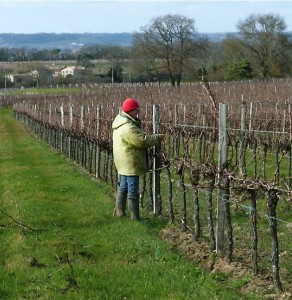
M and her husband are the 3rd generation owners of an old Juillac vineyard. They are local pioneers of organic viticulture and their success has been hard won by self education, trial and error and passion. M was born into a St Emilion vineyard family so vines are in her blood and bones.
When she yodeled back I found her, bundled up like a polar bear, but even a wool cap couldn’t hide the blond locks and genetic vestiges of northern Italian beauty. A Madonna with a weighty battery pack on her back, wired to cutters so heavy she suffers from tendonitis. I admired her thick rubber boots as my feet grew numb from the cold. Hers are lined with pink neoprene, the material used by scuba divers in the North Atlantic. (With a sheath for a nifty little pink saw.)
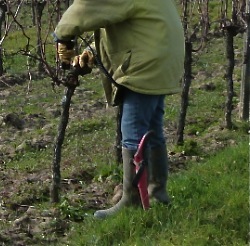
She snipped and I asked a million questions. I have five textbooks next to my pillow, but the diagrams are impossible to understand. M said you have to learn by doing, so she told me to put down the camera and pick up my secateurs. To my yelps of panic: “Heavens. It’s like a hair – it will grow back.”
She wasn’t so nonchalant about the bigger picture – as industrials buy up ever-larger tracts, it’s harder for family farms to break even. I’m not alone in idealizing people like M, who lives her beliefs and chooses the harder road, which usually means more hours of manual labor to avoid using chemicals. Organic is a way of life for M and her husband, not a series of techniques. They worry about everyone’s children, they worry about everyone’s tomorrow, they worry about feeding the earth. Feeding the earth is like serving a breast feeding mother wholesome food; she then does the rest her own way, providing nutrients that science hasn’t even named yet. On the other hand, industrial farmers focus on feeding the plant, which usually means synthetic fertilizer after chemical treatments have stripped the earth of the microscopic mushrooms and bacteria that help the earth replenish itself.
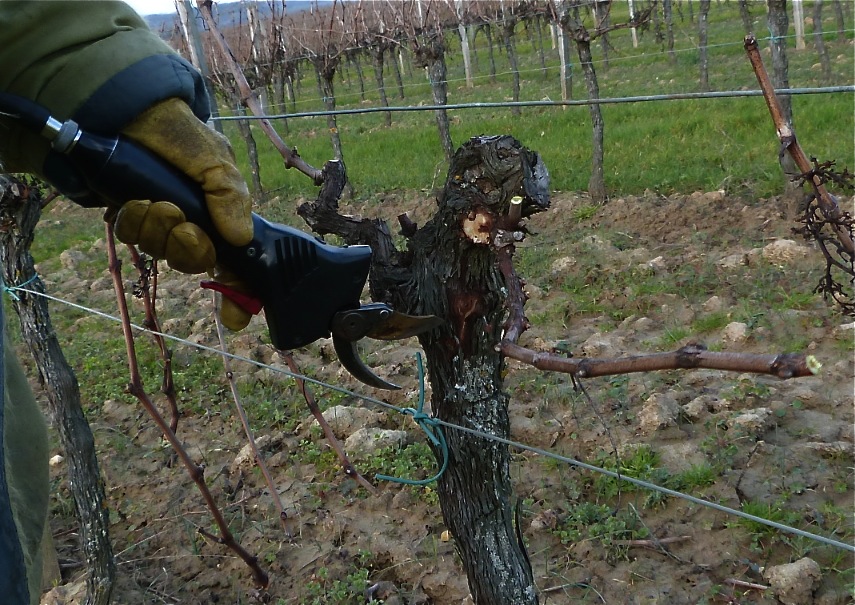
The taille is usually dominated by men, and M learned mostly from her husband. As she cut she shared some secrets as well as savoir faire. I watched her nick the bark below the 2013 latte (the cane that will bear fruit this year) a technique that sometimes works (“on va tentner nos chances”) to train the pied de vigne to grow lower. My vivid tutorial ranged from recognizing early signs of disease attacking the wood, to concoctions like purin d’ortie (stinging nettles) which stimulate the plants’ defense mechanisms, to the recent law, passed quietly, that punishes farmers who exchange seeds among themselves, as farmers have done since the dawn of agriculture.

Earlier in the week I had come upon L, another woman in the community working her vines. Earphones tucked under her bonnet, she was moving rhythmically down the rows pulling the tangled wood from the wires with her own signature maternal touch. I assumed her grace was synched with the cadence of the music. When I asked what music gives her this lift – she said au contraire, she listens to the news. A radio station similar to NPR in the US or the BBC in the UK: in-depth programs covering issues that don’t make the headlines. She too mentioned this new law against “unregistered” seeds (i.e. seeds that aren’t bought from companies like Montsanto or Bayer.) She wonders who cares about sterile seeds, biodiversity and “seed sovereignty.” She wonders if people know what’s at stake.
I’ve heard from a primary source that there is now a group of farmers in our region who meet secretly to exchange seeds. They call it protecting the droit ancestral des paysans. If they are discovered, they face huge fines and years in prison. How did it come to this?
My feet were paralyzed with cold when we paraded back to M’s house. We thawed out by the fire, drank green tea with dark honey. The honey got us started on how to save the bees, but we figured we’d done enough earth-worrying for one day. M sighed – working the vineyard brings great satisfaction and when weather permits, can also be a joy. But this, right now, is the “best part of the vigneronne’s day: tea time, warming by the fire.” I rode my bike back home on the Roman Road, thinking about the Roman goddess of agriculture, Ceres, and her mortal descendents, my neighbors, les viticultrices.
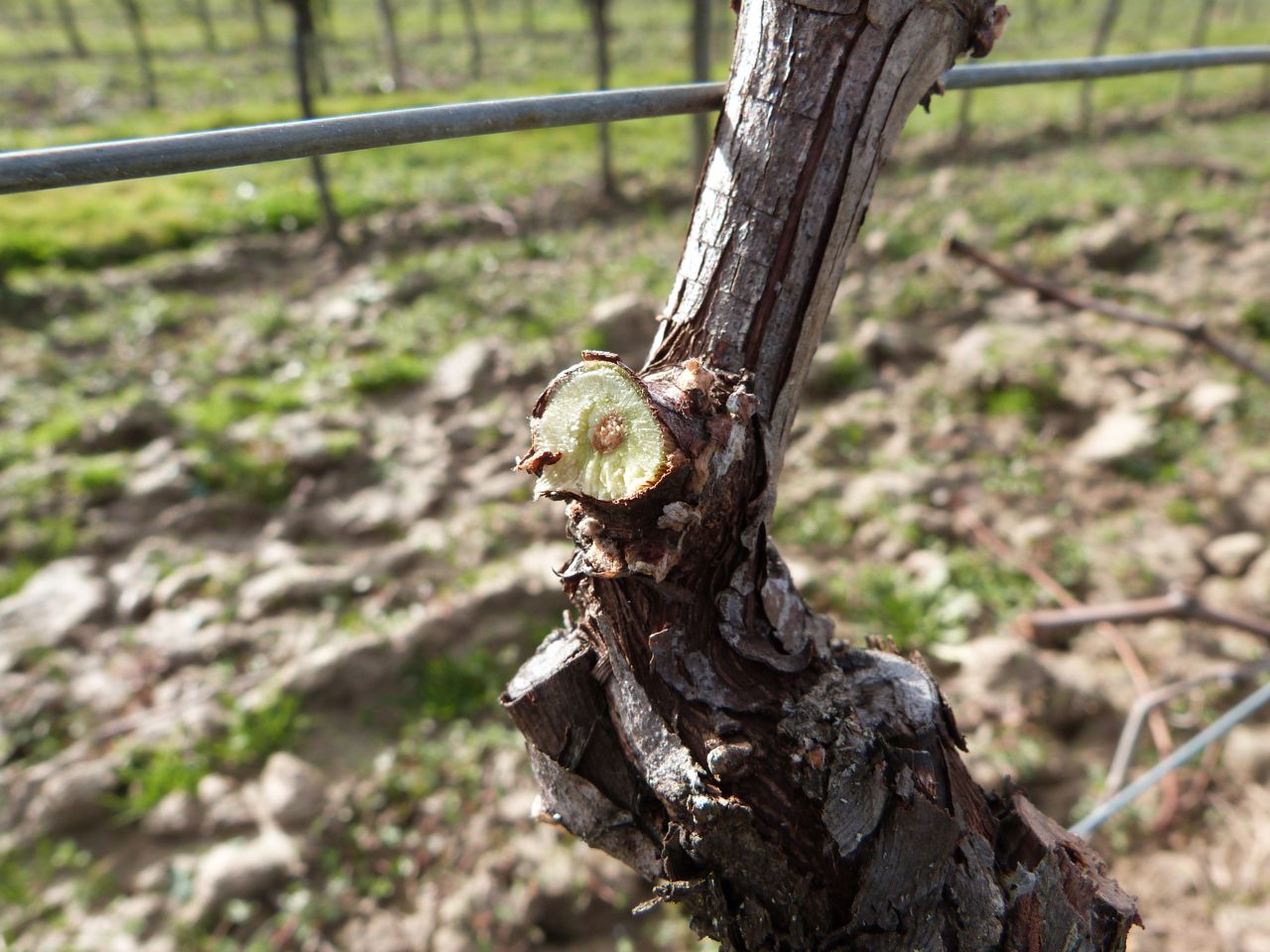

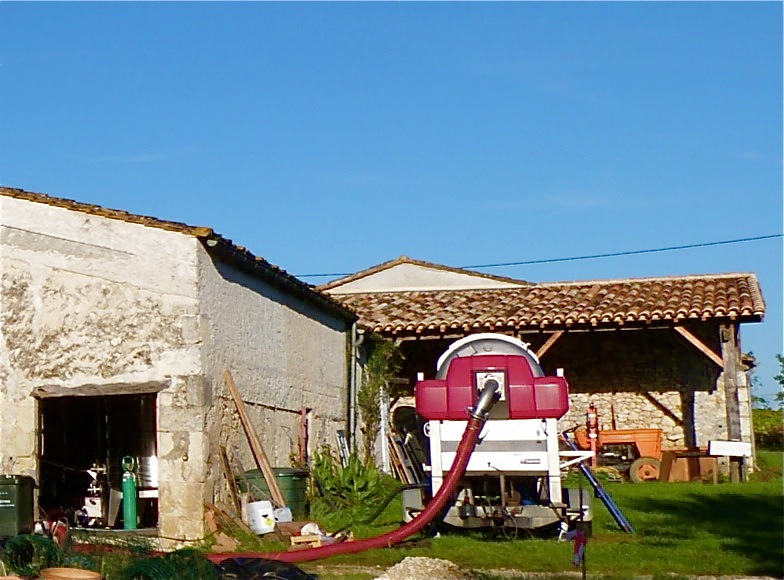
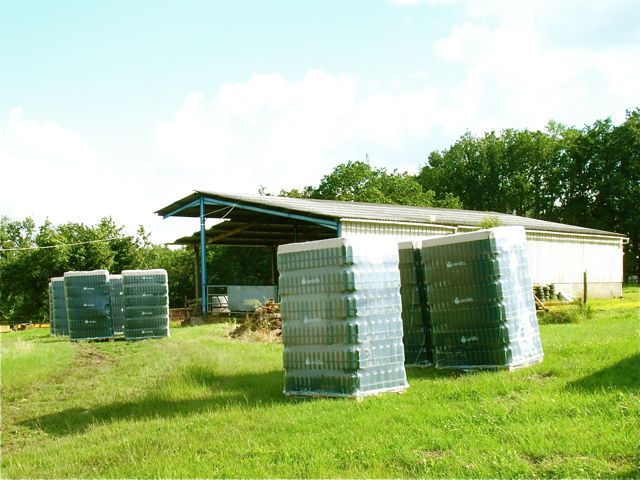

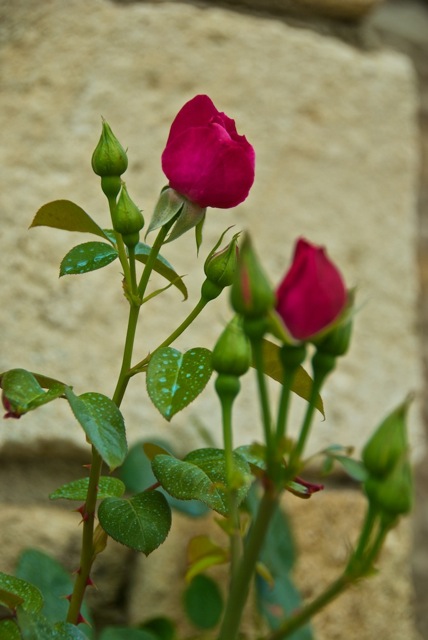
2 thoughts on “Women in their Vineyards”
Hi Aunt Mary, Thank you for sharing all your experiences with us on your website. I really enjoy living vicariously through your words. On a side note, I was just talking to someone the other day about what we can do to save the bees. Hugs, Christy (Georgia, USA)
Hi Mary, I’m in New Zealand at the moment and a couple of days ago drove through the Marlborough wine area at the northern end of South Island. The scenery is stunning, a huge flat fertile plain with mountains either side leading down to the Pacific rollers. Miles and miles of vines in immaculate rows, the estates divided by tall conifer hedges planted as wind breaks from the antartic blasts that lash the country. The vines look quite different from the french ones, lying nearly flat along their wires, they are almost 2 dimensional and don’t have the juicy, bushy look of their french cousins in mid summer. I think now of your comments about industrial farmers, synthetic fertilizers and chemicals, Monsanto and Bayer and feel a little differently about the photo I proudly took of the sign pronouncing the Cloudy Bay estate.
All love from the other side of the world, Sally